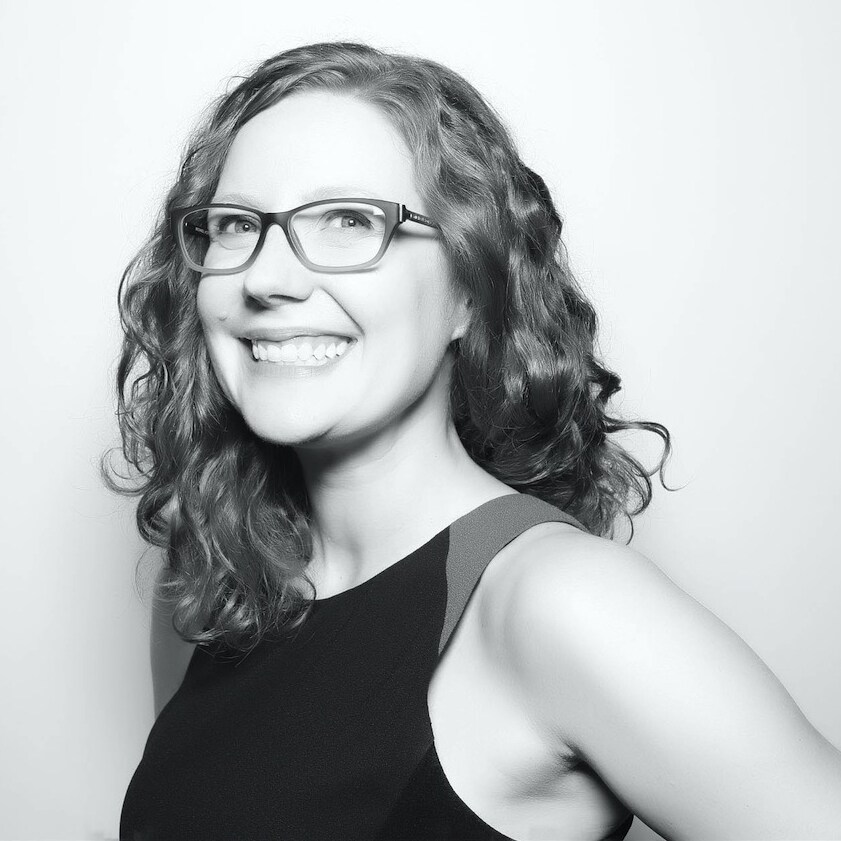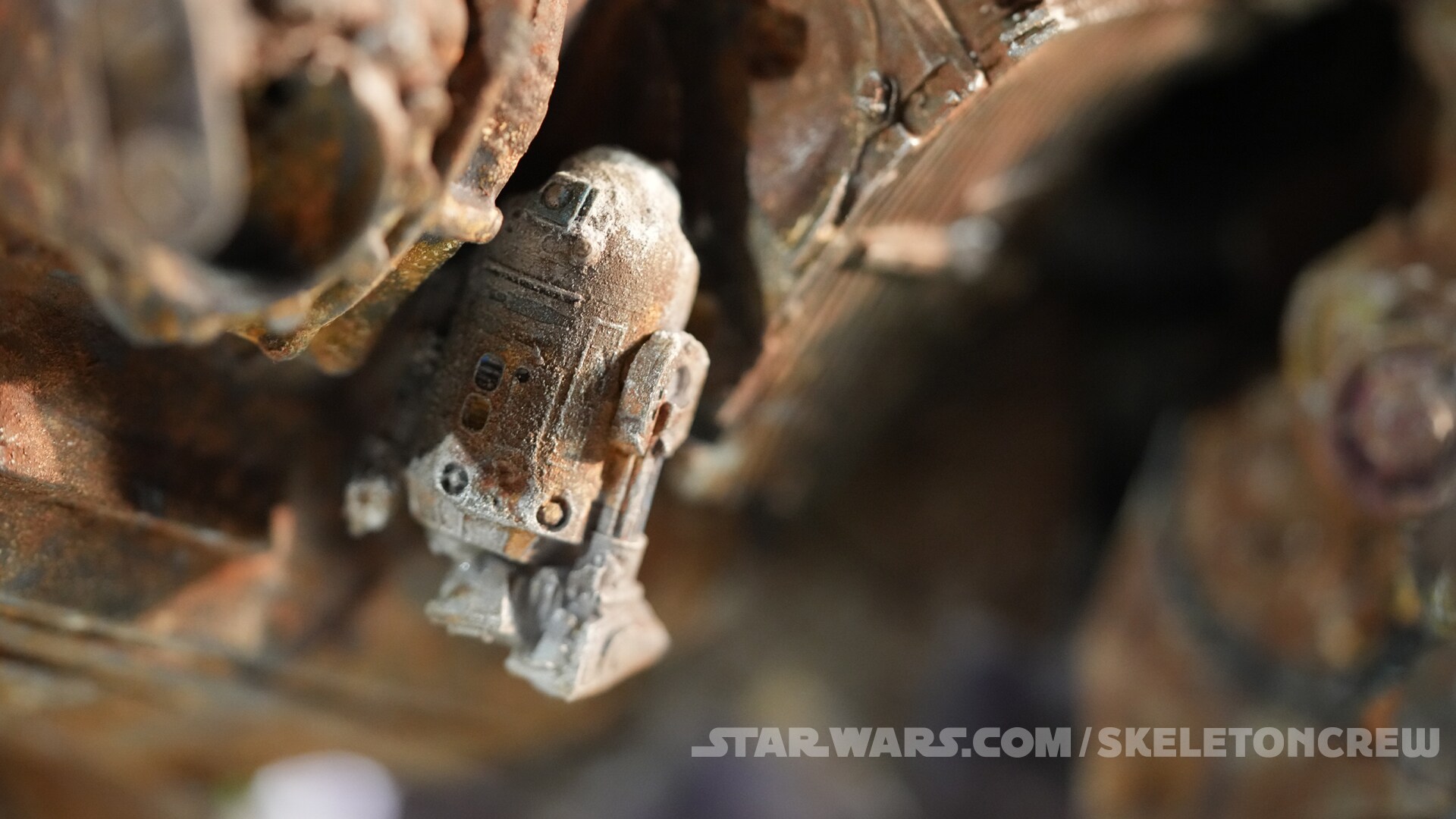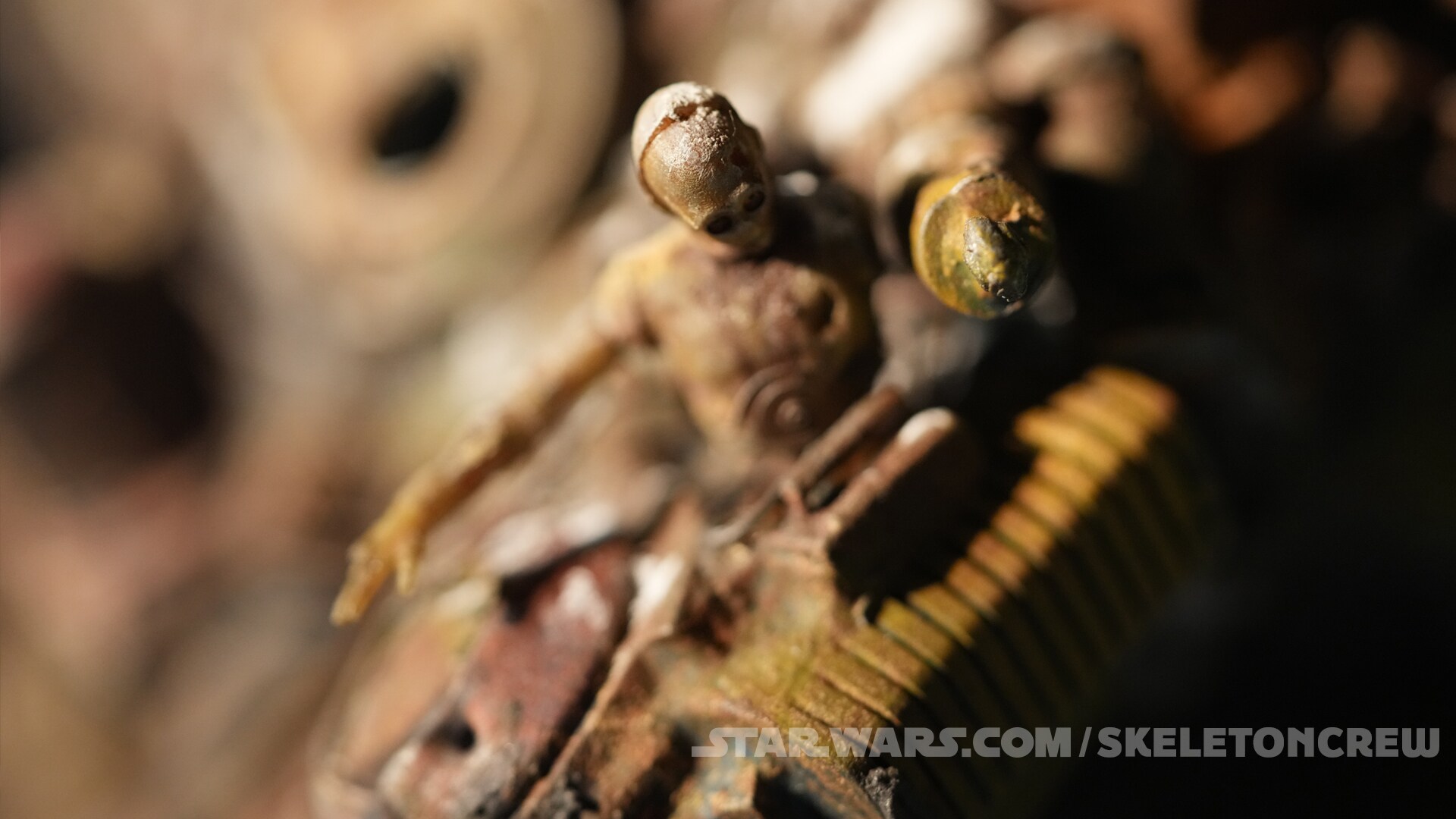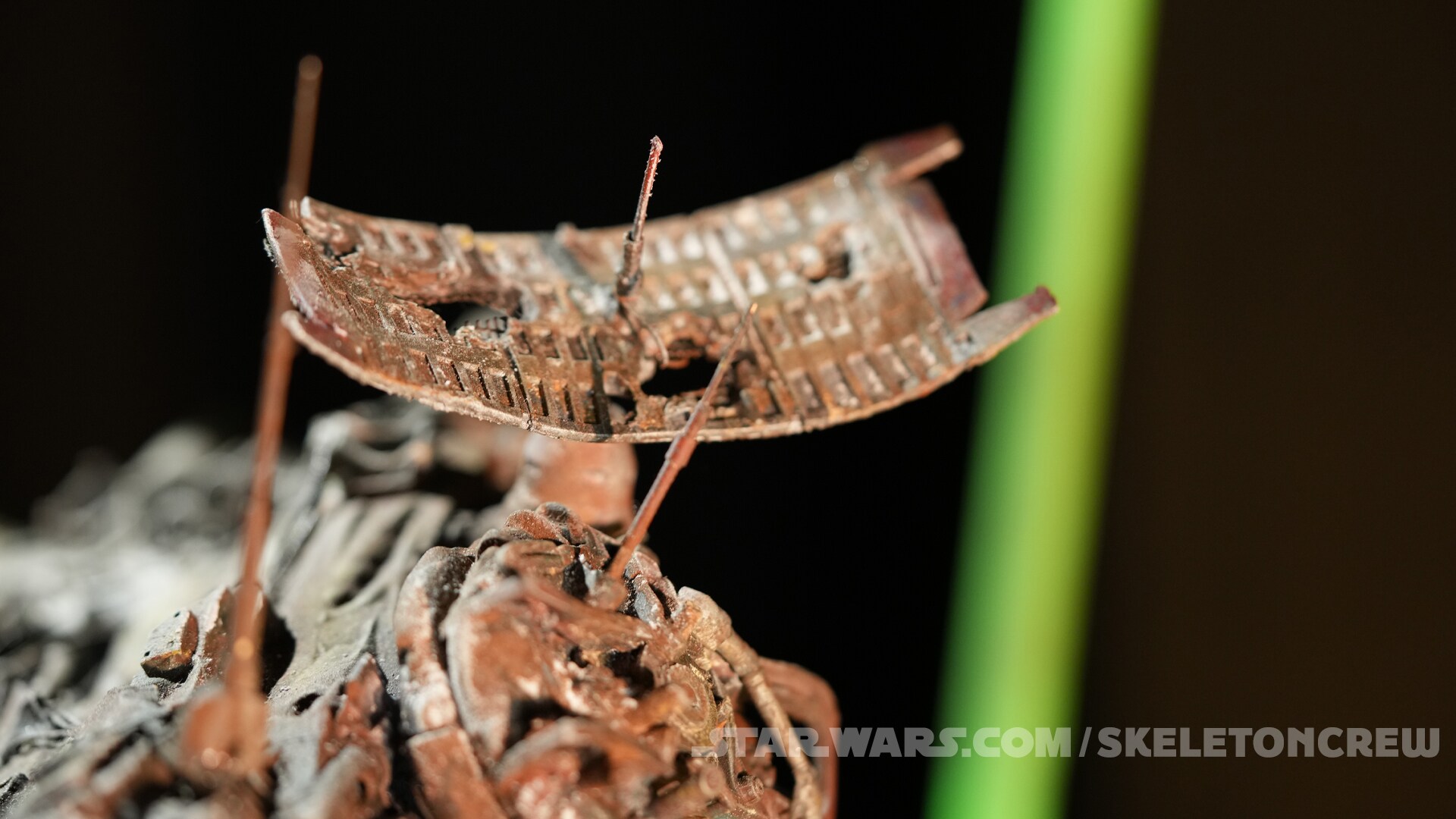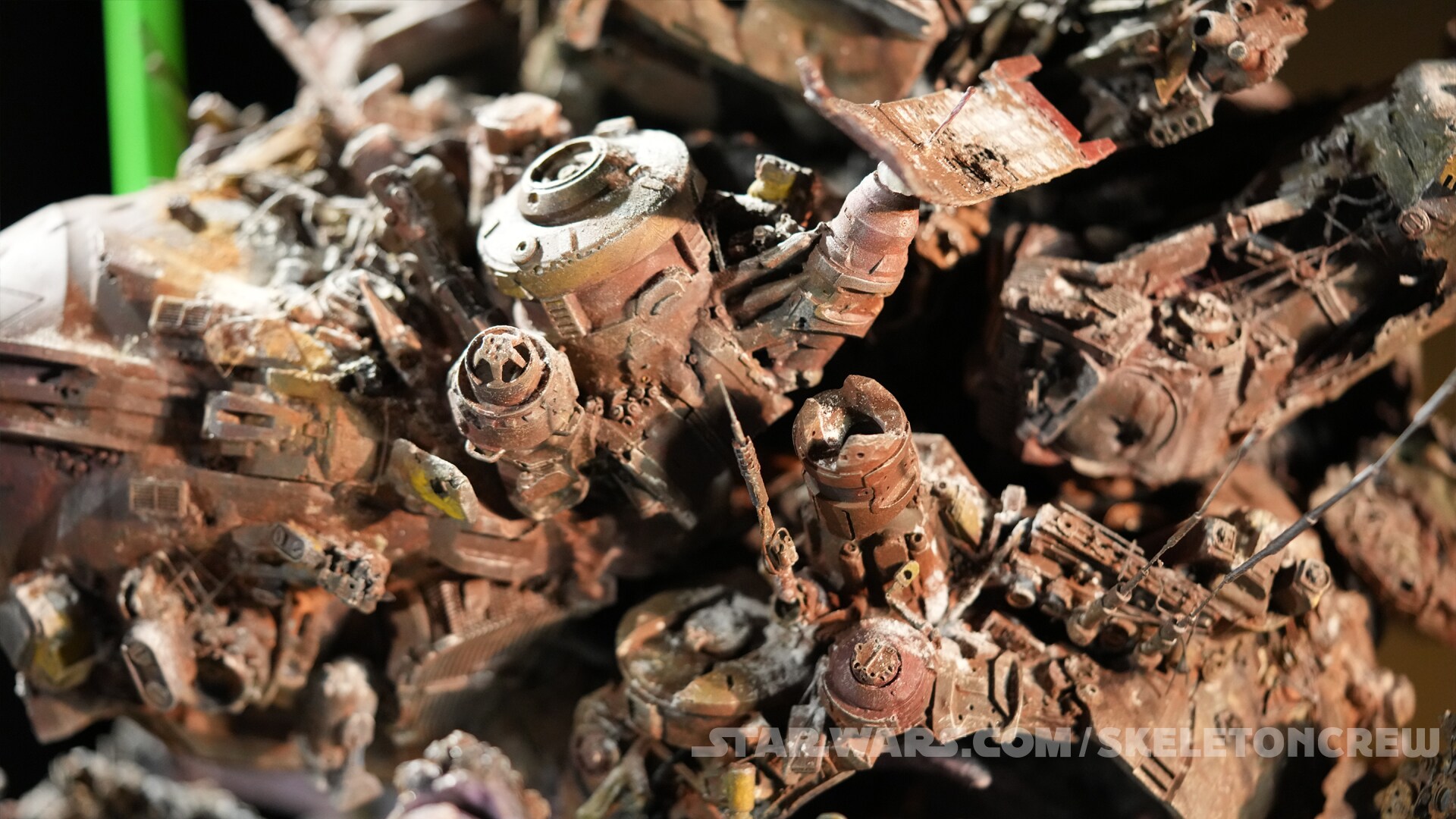On the beaches of Lanupa, Wim and KB encounter a terrifying creature who may just see the lost children of At Attin as more food than friend. To create Star Wars: Skeleton Crew’s lumbering mother crab, a massive version of the seemingly harmless hermit crab-like creatures the pair followed skittering across the sands, series co-creators Jon Watts and Chris Ford called upon Tippett Studio to design, build, and animate the stop-motion puppet in their Berkeley, California studio.
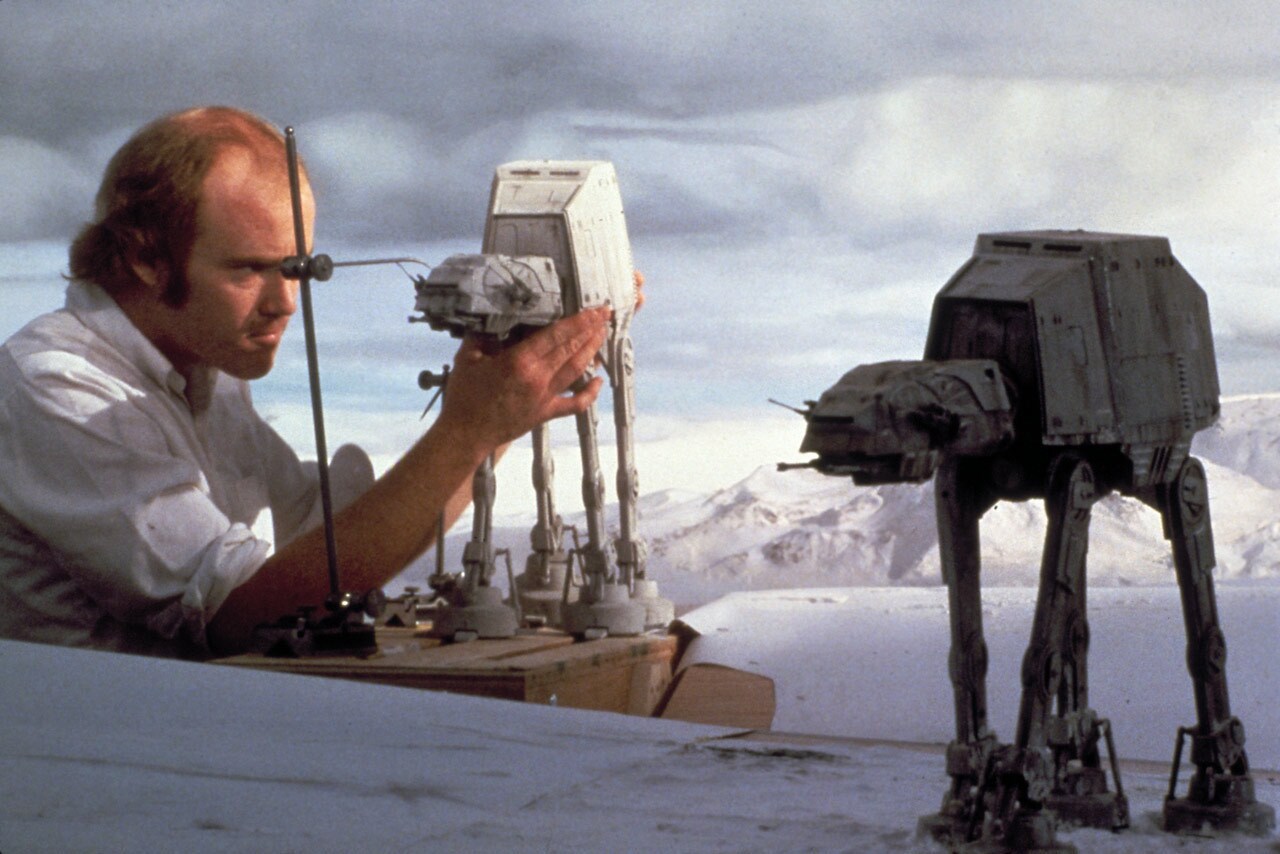
The studio was founded by legendary animator and creature creator Phil Tippett, who led the innovative animation techniques for the tauntauns and AT-AT walkers of Star Wars: The Empire Strikes Back and sculpted several of the aliens, including Max Rebo, populating Jabba’s Palace as the head of the creature department for Star Wars: Return of the Jedi. In recent years, the Tippett Studio has been called in to recreate Tippett’s stop-motion dejarik chess set from Star Wars: A New Hope for three recent Star Wars films — The Force Awakens, Solo: A Star Wars Story, and The Rise of Skywalker — and create new stop-motion masterpieces for The Mandalorian and The Book of Boba Fett. For Skeleton Crew, the Mama Crab puppet, lovingly nicknamed Tet’niss, would become the studio’s heaviest creation to date.
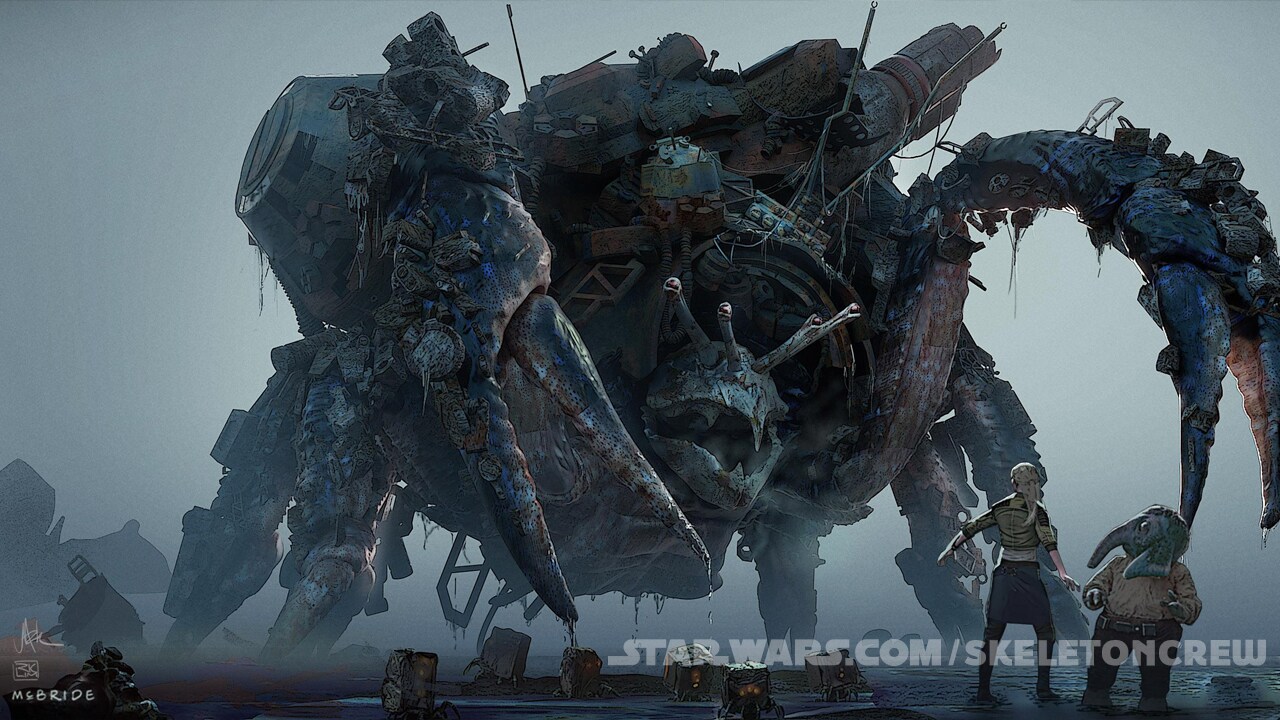
Making Mama
The Tippett Studio team didn’t set out to establish a studio record, but Mama Crab’s sheer size on screen dictated much of her design. Filmmakers wanted the creature to appear to be a staggering 30-feet-tall compared to the young actors. That scale also helped determine the size of the trash greeblies that would adorn her shell. “We 3D printed a lot of the parts that went onto the crab, but the thing that really took it to that next level for detail was the handcrafted elements that were placed on it: the antennas, the wires, and all of those little things that really gave it that sense of scale,” says visual effects supervisor Chris “CMo” Morley, who also served as director of photography on the shoot.
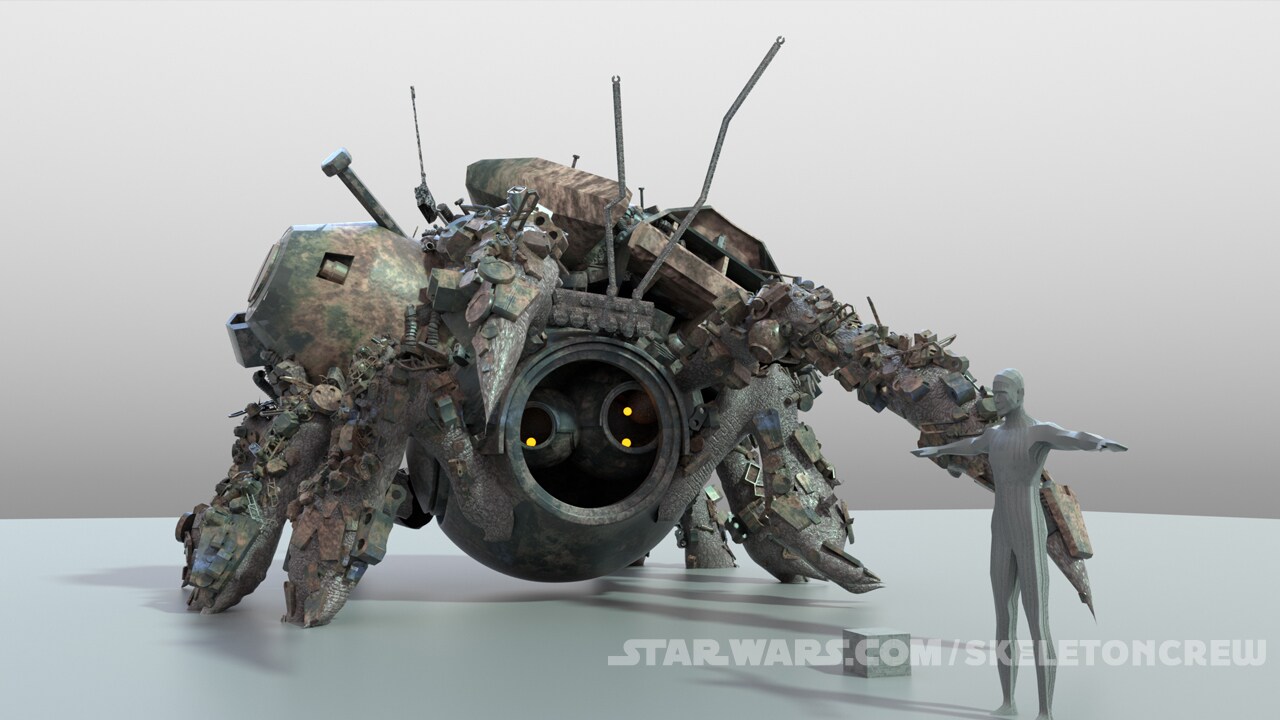
First, art director and fabrication supervisor Mark Dubeau worked with the series’ production designer Doug Chiang to digitally render the crab creature. Initial concept art passes defined the overall shape, but left the facial details out. “The original concept didn't have much of a face,” says Morley. “It was essentially a giant meatball with legs on it and a bunch of stuff sticking out of the back,” adds Dubeau, so he kitbashed a more detailed version in ZBrush. The only problem was he didn’t have a sense of the overall tone of the show. “I knew that it was kids and it kind of had a bit of a Goonies vibe, but when Doug saw it, its face was terrifying.” Chiang and his art department elongated the features, now complete with a snapping beak, and Dubeau realized the creature needed to be a little more friendly looking. “It has a little bit of a Muppet quality to it,” he says of the final design. “It's meant to be kind of creepy and scary, but you don't want to terrify children. That's not the tone of the show.”
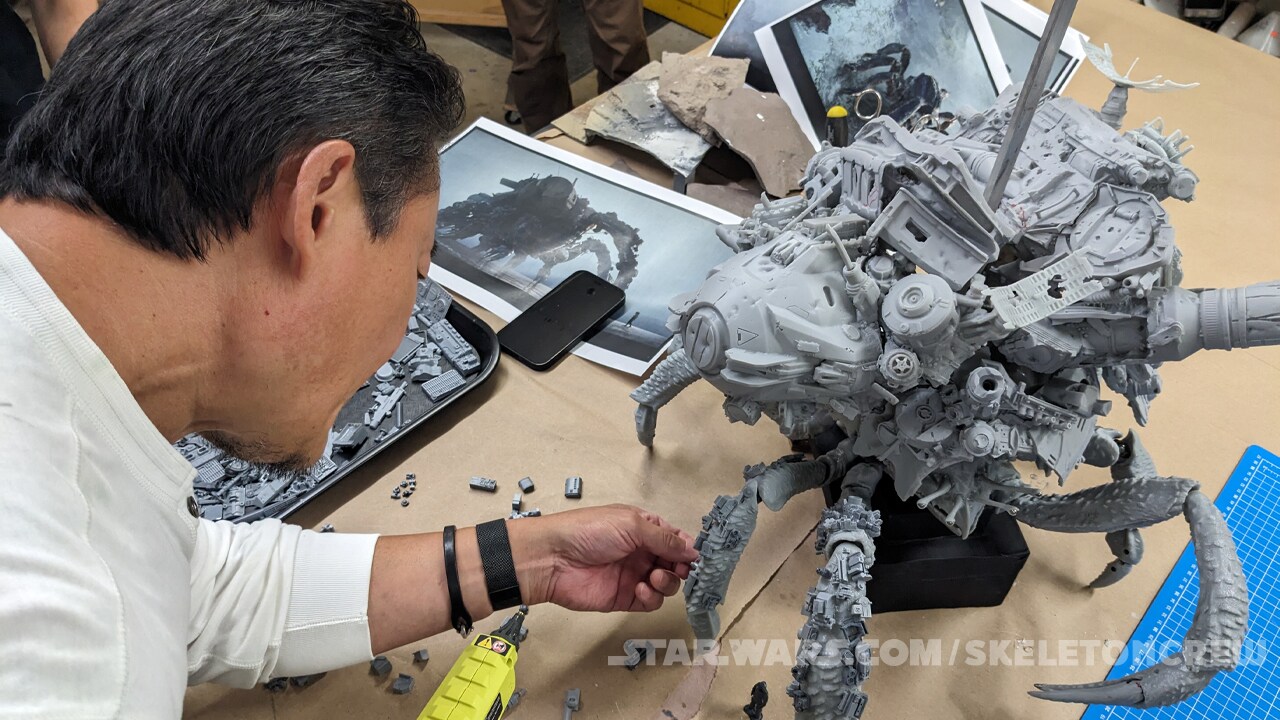
In his digital studio, Dubeau added model kit pieces similar to those used in the original Star Wars films, mindful that everything had to be sized to the younger characters for scale. Once the model went into fabrication, even more greeblies were added on. “I was having so much fun. I even invited Doug at one point and gave him a hot glue gun, and he came and he put junk on the legs,” Dubeau says. “It's completely festooned with garbage.”
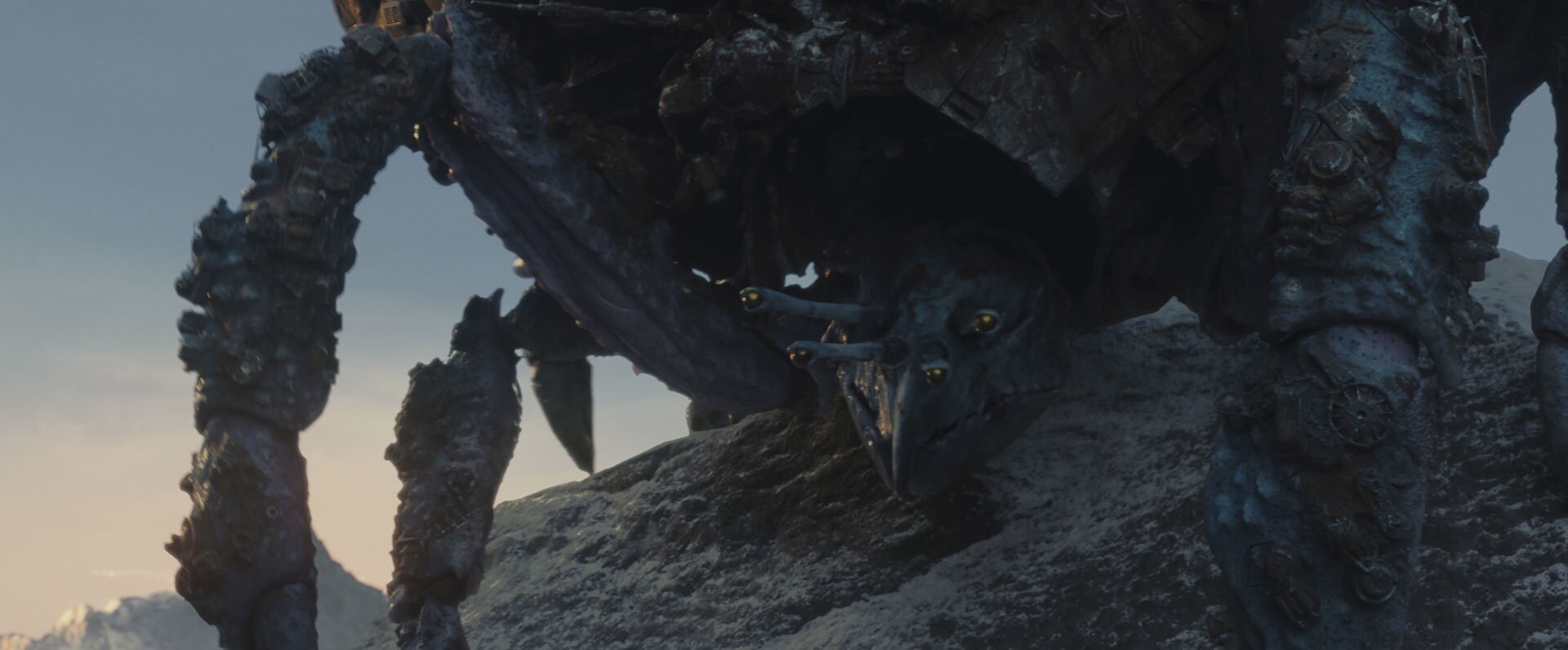
Hidden treasures
Look carefully and you may find some of the Easter eggs the team added to Mama Crab’s shell, hiding some elements with weathering and rust so it wasn’t immediately apparent where they were borrowed from. “If you look closely at the junk on his back, it's not just random parts. There's pieces of the Millennium Falcon in there,” says Dubeau. “There's pieces of an Imperial walker. There [are] droids stuck in there! I just wanted to make it look as bizarre as humanly possible.”





